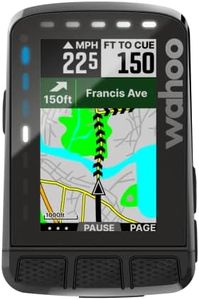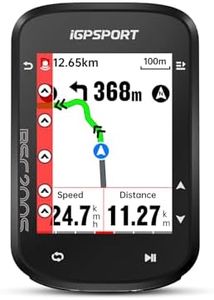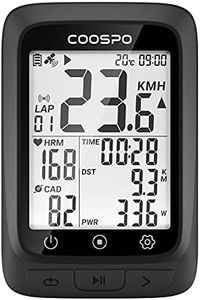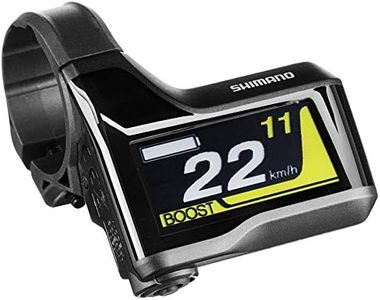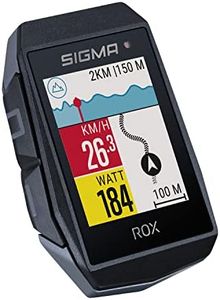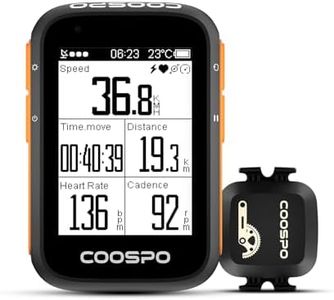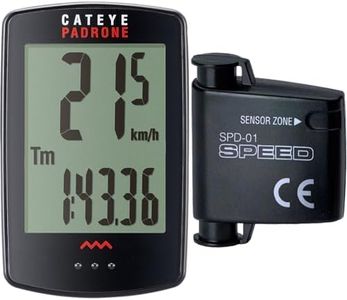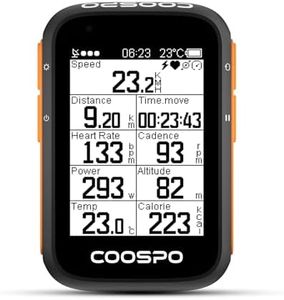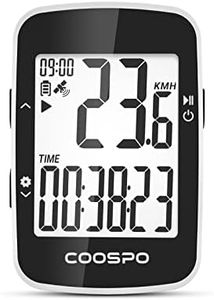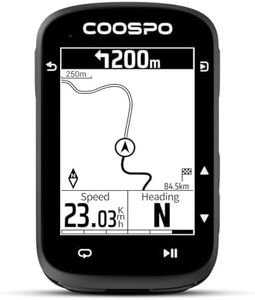We Use CookiesWe use cookies to enhance the security, performance,
functionality and for analytical and promotional activities. By continuing to browse this site you
are agreeing to our privacy policy
10 Best Bike Speedometers
From leading brands and best sellers available on the web.Buying Guide for the Best Bike Speedometers
Choosing the right bike speedometer can make your rides more enjoyable and help you track your progress effectively. Whether you're a casual rider, a daily commuter, or someone training for long distances, understanding what features matter most will ensure you pick a device that fits your needs. Think about how often you ride, the kind of data you want to see, and how simple or advanced you want your device to be. Matching your choice with your cycling habits and goals is the key to satisfaction.Display Type and SizeThe display shows your speed, distance, and other data while you're riding. A bigger or clearer display is important if you glance at your speedometer often or want easy readability, especially in bright sunlight. Smaller displays work for minimalist setups or if you only need to see basic numbers. If you often ride in low light, look for backlighting or high-contrast screens. Choose your display size based on comfort, visibility, and how much data you want visible at once.
Data Tracking FeaturesThis covers what information the speedometer can record, like current speed, average speed, trip distance, ride time, and sometimes even calories burned or cadence. If you want to keep your rides simple, a basic model showing speed and distance will be fine. But if you wish to track your training progress or analyze your rides in more detail, look for a model with advanced data tracking. Your needs should determine whether you want just the essentials or more detailed ride insights.
Wired vs. WirelessBike speedometers come with either wired or wireless connections between the sensors and the display unit. Wired models tend to be simple, possibly more reliable, but involve more installation work with cables. Wireless speedometers are easier to install and neater on the handlebars but might require batteries for both the display and sensor, and can be susceptible to local interference. Pick wired if you prefer simplicity and reliability, or wireless if you value less clutter and easier mounting.
Mounting and CompatibilityHow the speedometer fits on your bike matters for safety and convenience. Most models attach to your handlebars or stem, but you should check for compatibility with your bike's specific bar shape and size. If you have an unusual handlebar or plan to switch between bikes, opt for a speedometer with universal mounting options or quick-release features.
Battery Life and Power SourceSpeedometers are powered either by traditional coin batteries or rechargeable batteries. Long battery life means fewer replacements and less hassle, especially important if you ride often or forget to check battery levels. If you ride many hours or on long trips, look for a speedometer known for extended battery life or easy USB recharging. For occasional, short rides, almost any standard battery will suffice.
Water ResistanceSince bikes are often exposed to varying weather, having a water-resistant speedometer prevents damage from rain, puddles, or splashes. Higher water resistance is better if you frequently ride in unreliable weather conditions, while basic splash resistance is enough if your rides are mostly fair-weather. Match the level of water protection with how and where you typically cycle.
GPS CapabilitySome speedometers use GPS to measure distance and speed, while others rely on a wheel sensor. GPS-equipped models can offer more accurate tracking on different routes without calibration, and may support route mapping and post-ride analysis. However, they may consume more power and cost more. Pick a GPS model if you want to record routes, explore new areas, or don't want to depend on wheel size calibration.
Connectivity (e.g., Bluetooth, ANT+)Connectivity lets your speedometer sync data with your smartphone or other devices, sometimes allowing for app integration, notifications, or connecting to additional sensors such as heart rate monitors. If you want in-depth data analysis, social sharing, or to use your speedometer as part of a larger fitness system, look for these connectivity features. If not, standalone units without connectivity will meet your needs just fine.


